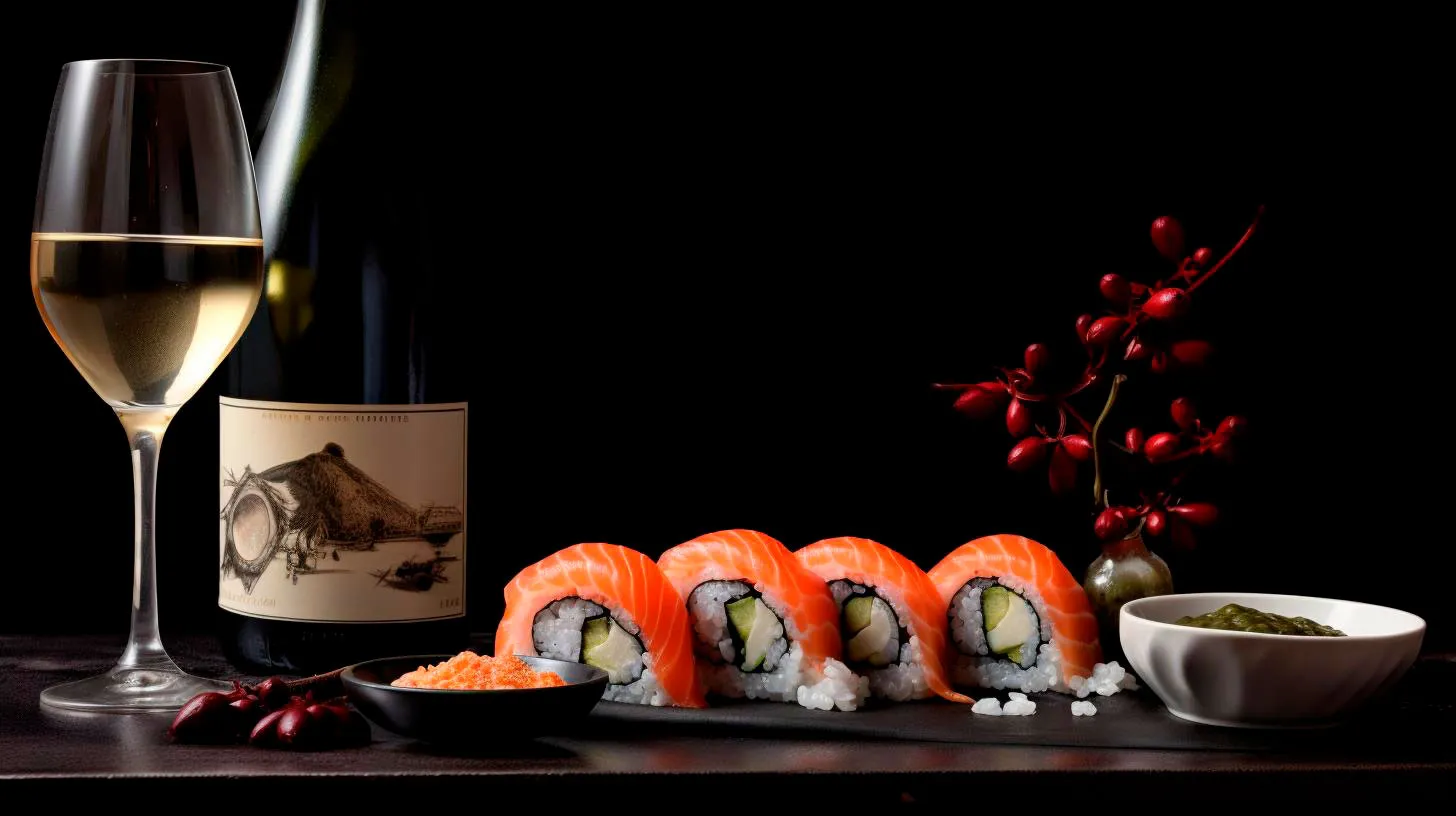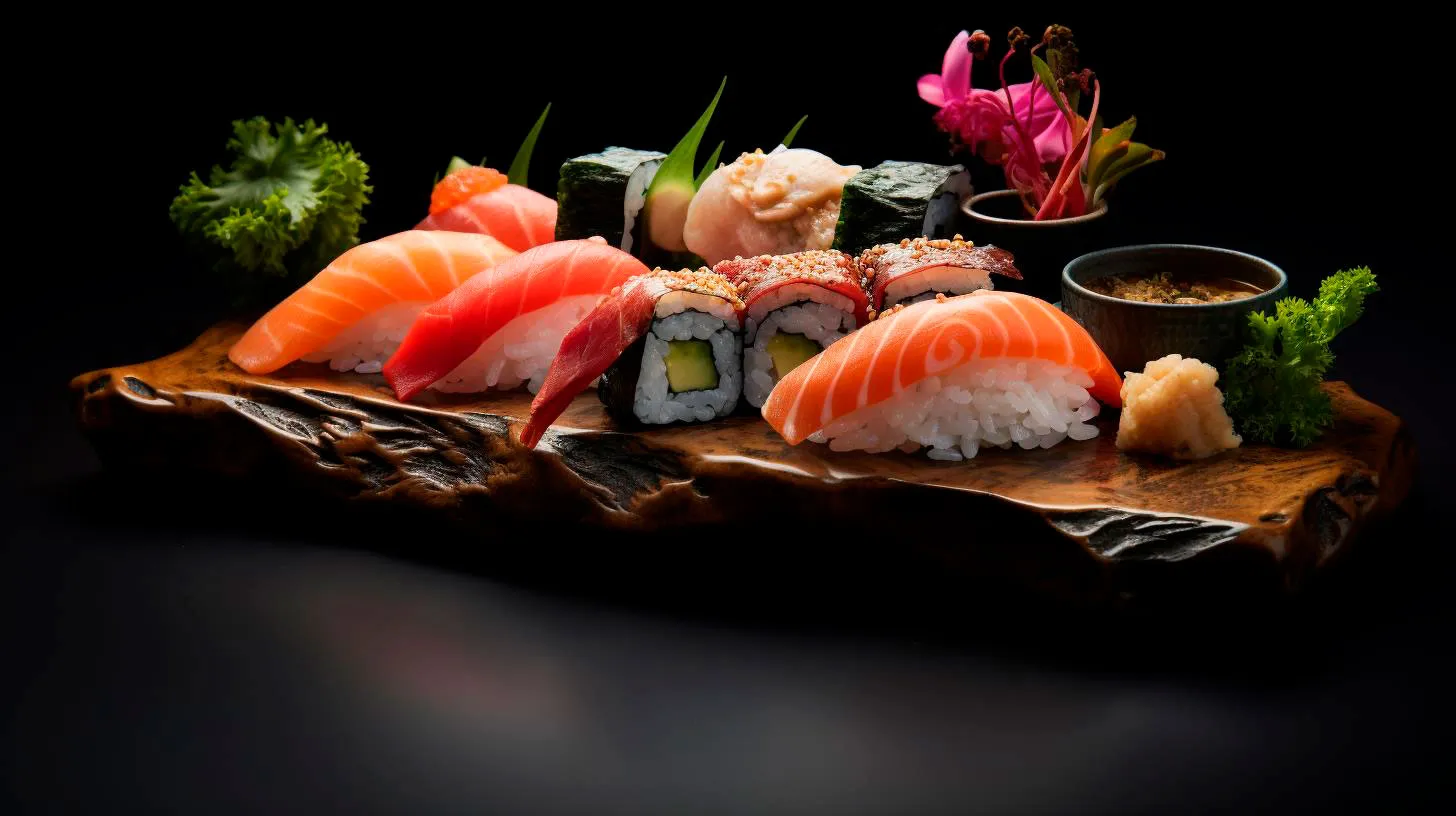From Farm to Table: Sourcing the Finest Ingredients for Sushi Rice and Seafood
The Importance of Sourcing
Sushi is a culinary art that originated in Japan and has gained immense popularity worldwide. To create the perfect sushi, each ingredient must be selected with care and precision. From the rice to the seafood, sourcing plays a significant role in maintaining the integrity of this delectable dish.
Here are some key reasons why sourcing is crucial for sushi ingredients:
- Freshness: Sushi demands the freshest ingredients to bring out its unique flavors. The quality of seafood and rice directly impacts the taste and texture of the final product.
- Authenticity: Sourcing ingredients from the right regions ensures an authentic sushi experience. Traditional Japanese sushi relies on specific rice and fish varieties that are native to Japan.
- Sustainability: Responsible sourcing practices prioritize sustainability and ecological balance. Sourcing seafood from sustainable fisheries helps protect marine ecosystems and ensures a steady supply for the future.
The Journey of Sushi Rice
At the heart of every sushi roll lies a perfectly cooked, seasoned, and flavored rice. The journey of sushi rice begins on the fields and goes through careful processing before reaching your plate.
Here is an overview of the steps involved:
- Farming: Sushi rice, also known as shari or sumeshi, is primarily grown in paddy fields. These fields are flooded with water, creating the ideal conditions for rice cultivation.
- Harvesting: After the rice reaches maturity, it is carefully harvested and separated from the plants.
- Processing: The harvested rice undergoes processing that involves cleaning, removing the husk, and polishing to give it a visually appealing appearance.
- Cooking: When it comes to preparing sushi rice, precision is key. The rice is washed, soaked, and cooked to achieve the perfect texture and stickiness.
- Seasoning: After cooking, the rice is seasoned with a blend of rice vinegar, sugar, and salt. This crucial step gives sushi rice its distinctive flavor.
Key takeaway: Sourcing high-quality sushi rice involves careful cultivation, precise processing, and skillful seasoning to achieve the perfect texture and flavor.
The Journey of Seafood
When it comes to sushi, the seafood used plays a pivotal role. From raw fish to shellfish, the journey of seafood is a complex and meticulous process.
Here are the essential steps involved in sourcing fresh seafood for sushi:
- Harvesting: Fishing vessels venture out into the open seas or coastal areas to catch various types of fish and shellfish. This process heavily relies on sustainable fishing practices to minimize environmental impact.
- Processing: After the catch is brought to shore, the seafood undergoes careful processing. This includes cleaning, gutting, scaling, and filleting the fish. Shellfish are meticulously inspected and shucked to ensure quality.
- Transportation: Fresh seafood is kept in temperature-controlled storage to maintain its freshness. Proper packaging and transportation methods are crucial to ensure the seafood arrives at its destination in prime condition.
- Sushi Chefs: Skilled sushi chefs play a vital role in the journey of seafood. They have expertise in selecting the finest and freshest seafood, ensuring it meets their high standards.
- Quality Control: Sushi restaurants and suppliers follow stringent quality control measures to guarantee that only the freshest and highest-quality seafood reaches the customers.
Key takeaway: From the moment seafood is harvested to when it reaches your plate, a series of rigorous processes are in place to ensure its quality and freshness.
The Future of Sushi Ingredient Sourcing
As the demand for sushi continues to grow around the globe, the future of sourcing sushi ingredients faces several challenges and opportunities.
Here are some trends and predictions for the future:
- Sustainable Sourcing: There is a growing awareness among consumers regarding sustainable practices. Sushi restaurants and suppliers are increasingly focusing on sourcing seafood from sustainable fisheries to meet this demand.
- Local Sourcing: The farm-to-table movement is gaining momentum, even in the sushi industry. Sourcing ingredients locally not only supports local farmers but also ensures fresher and more traceable ingredients.
- Technological Advancements: With advancements in fishing and aquaculture technologies, the sourcing process is becoming more efficient and environmentally friendly. These advancements are expected to contribute to the overall quality of sushi ingredients.
In conclusion, sourcing the finest ingredients for sushi rice and seafood is essential for delivering an exceptional dining experience. From field to plate, each step in the sourcing process requires meticulous attention to ensure the highest quality and freshness. By prioritizing sustainability, authenticity, and freshness, the sushi industry can continue to thrive while meeting the evolving expectations of consumers.
Unlocking the Culinary Artistry: The Fusion of Sushi Rice and Seafood
The beauty of sushi lies in its simplicity and the skill required to prepare it. In this article, we will delve into the art of sushi-making, exploring the fusion of sushi rice and seafood, and uncovering the secrets behind this culinary masterpiece.
The Magic of Sushi Rice
The foundation of any great sushi is the rice. Sushi rice, also known as shari, is an essential component that acts as a canvas for a chef’s creativity. While sushi rice may seem simple with just rice, rice vinegar, sugar, and salt, the technique of its preparation is what sets it apart. Here are some key takeaways about sushi rice:
- Sushi rice is short-grained rice, such as Japanese rice or Calrose rice, which has a sticky texture when cooked.
- The seasoning of sushi rice involves a delicate balance of rice vinegar, sugar, and salt, giving it a slightly sweet, tangy flavor.
- The rice should be cooked to perfection, neither too soft nor too firm, allowing it to hold its shape when combined with the seafood.
Once the sushi rice is ready, it becomes the base for various types of sushi, including nigiri, maki, and temaki. Each style offers a unique experience and presentation, creating a diverse range of options for sushi enthusiasts.
Unleashing the Flavor of Seafood
Seafood is the star of any sushi dish. From succulent slices of raw fish to delicate shellfish, sushi offers a wide range of options to tantalize your taste buds. The choice of seafood in sushi depends on freshness, quality, and personal preference. Here are some notable features of seafood in sushi:
- Sushi showcases a variety of fish, such as tuna, salmon, yellowtail, and snapper, each with its distinct flavor and texture.
- Shellfish, including shrimp, scallops, and crab, add a delightful sweetness and tenderness to the sushi.
- Vegetarian options, like avocado, cucumber, and tofu, provide a refreshing and healthy alternative for non-seafood lovers.
The seafood used in sushi should always be fresh and handled with care. It should be properly sliced to enhance both the visual appeal and taste of the dish. Sushi chefs take great pride in sourcing the finest ingredients, working closely with suppliers to maintain the highest standards of quality.
Marrying Sushi Rice and Seafood: The Art of Sushi Rolls
One of the most popular forms of sushi is the sushi roll, known as maki. Maki rolls consist of layers of sushi rice, seafood, and other fillings, all wrapped in a sheet of seaweed called nori. The fusion of sushi rice and seafood in a sushi roll creates a harmonious blend of flavors and textures. Here are some key advantages of sushi rolls:
- Maki rolls allow for endless creativity, with various combinations and fillings.
- The nori acts as a wrapper, providing a delicate crunch and umami flavor.
- Sushi rolls are easy to eat and perfect for sharing with friends and family.
Popular sushi rolls include the California Roll, Dragon Roll, and Spicy Tuna Roll, each offering a unique experience that satisfies different palates. The combination of sushi rice and seafood in a sushi roll elevates the dining experience, tickling your taste buds with every bite.
The Health Benefits of Sushi
In addition to its exquisite taste, sushi also offers several health benefits. The fusion of sushi rice and seafood creates a nutritious and well-balanced meal. Here are some key health benefits of sushi:
- Sushi is a low-calorie option, making it an excellent choice for those watching their weight.
- Seafood in sushi is a rich source of omega-3 fatty acids, known for their heart-healthy properties.
- The inclusion of vegetables, such as seaweed, avocado, and cucumber, provides essential vitamins and minerals.
However, it’s important to note that sushi should be consumed in moderation and from reputable establishments to ensure the freshness and quality of the ingredients.
Unlock Your Sushi Experience
Sushi is more than just a meal; it is an art form that combines the mastery of the sushi chef with the finest ingredients. The fusion of sushi rice and seafood unlocks a world of flavors, textures, and visual delights. Whether you are a sushi connoisseur or a newcomer to the culinary world of sushi, take a leap of faith and unlock the artistry of sushi for a truly unforgettable dining experience.
Elevate Your Taste Buds: Rediscovering Flavors through Sushi Rice and Seafood
In this article, we will explore the art of sushi-making, the importance of sushi rice, and how this classic pairing can elevate your taste buds to new heights.
The Craft of Sushi-Making
Sushi-making is a centuries-old Japanese culinary art that requires precision, creativity, and an intimate understanding of flavors. It is not simply about rolling fish and rice together; it is a harmonious blending of ingredients to create a symphony on the taste buds. From the moment the sushi chef selects the freshest seafood to the final presentation on your plate, every step is carefully orchestrated to ensure a sublime dining experience.
To truly appreciate the art of sushi-making, let’s start by understanding its key components: sushi rice and seafood.
The Importance of Sushi Rice
Sushi rice, or “shari,” is the heart and soul of every sushi roll. Its sticky texture and delicate taste enhance the flavors of the seafood, creating a perfect balance. Properly seasoned sushi rice is a key element in achieving an authentic sushi experience.
Here are some key points to know about sushi rice:
- Sushi rice is short-grain rice that is sticky when cooked.
- It is seasoned with a mixture of rice vinegar, sugar, and salt to give it a slightly sweet and tangy taste.
- The consistency of sushi rice is crucial, as it impacts the firmness and stability of the sushi roll.
Remember, sushi rice acts as a blank canvas that complements the flavors of the seafood and other ingredients in the sushi roll.
The Versatility of Seafood
Seafood is the soul of sushi, providing the rich, umami flavors that make each bite a revelation. From delicate slices of fresh fish to succulent shellfish and luscious roe, the variety of seafood options available in sushi is vast and diverse.
Here are some of the most popular seafood choices in sushi:
- Maguro (tuna): Offers a rich, buttery flavor and firm texture.
- Sake (salmon): Known for its delicate taste and appealing orange color.
- Hamachi (yellowtail): Delivers a buttery texture and mild flavor.
- Ebi (shrimp): Provides a sweet and slightly crunchy bite.
- Unagi (freshwater eel): Adds a smoky, savory taste to sushi rolls.
These are just a few examples, as the world of sushi offers numerous other seafood options, including uni (sea urchin), ikura (salmon roe), and hotate (scallop). Each type of seafood brings its unique character to the overall flavor profile of sushi, ensuring a diverse and exciting culinary experience.
Key Takeaways
As we delve deeper into the intricate world of sushi, it becomes evident that sushi rice and seafood form the foundation of this exquisite cuisine. Here are the key takeaways to remember:
- The art of sushi-making requires precision, creativity, and a deep understanding of flavors.
- Sushi rice, with its sticky texture and tangy taste, is a crucial component in achieving the perfect sushi roll.
- Seafood, ranging from tuna and salmon to shrimp and eel, provides the diverse flavors that make sushi a gastronomic delight.
Next time you indulge in sushi, take a moment to appreciate the culinary expertise and attention to detail that goes into creating this masterpiece. Let the flavors transport you to the vibrant streets of Japan, where sushi has evolved into an art form. Elevate your taste buds and embark on a sensory journey through the remarkable combination of sushi rice and seafood.



